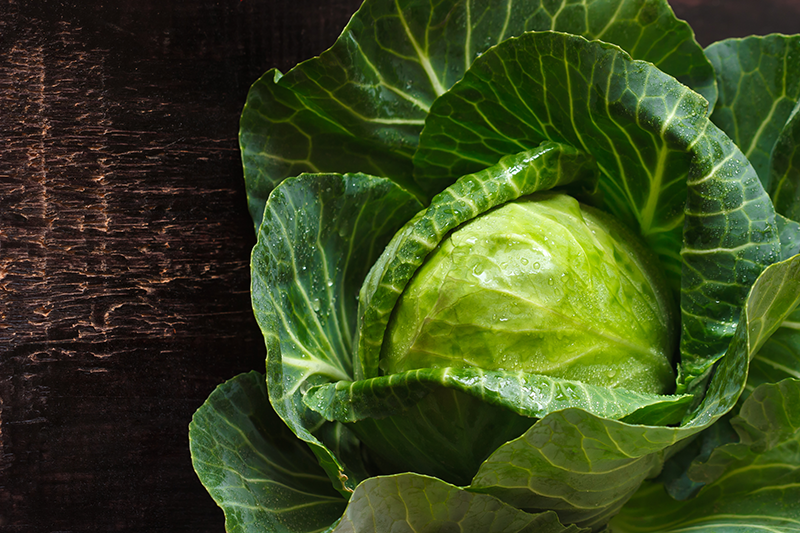

Modern cabbages in genus Brassica are descended from leafy wild mustard plants native to the Mediterranean seacoast. Used both for eating and edible ornamental landscaping, cabbages are usually classified as either regular head cabbage (B. oleracea var capitate) or Chinese, sometimes called Napa, cabbage (B. campestris var. pekinensis). Both consist of leaves layered one upon another to form a ball. While head cabbages are usually quite compact and round, Napa cabbages are typically looser and may be either cylindrical or round, resembling a tighter head of romaine lettuce.
Cultivated from centuries in China, the plant’s popularity across Europe may be attributable to the Celts, who brought the plant back from invasions into Asia Minor, eventually passing it on the the conquering Romans. The Romans spread cabbage farther although it wasn’t introduced to America until much later when Europeans and colonists brought tit to the New World.
Napa cabbage has a milder taste than regular green head cabbage and is often used for soups, pickling, stir fry, or egg rolls. Head cabbage is used in a variety of dishes like coleslaw and sauerkraut and has become one of the world’s most popular vegetables particularly in Russia, Poland , and Germany.
References: Cornell University, Texas A&M Agrilife Extension Website, UC Davis Postharvest Technology website, University of Arizona College of Agriculture and Life Sciences, University of Florida IFAS Extension, Western Growers Association.

